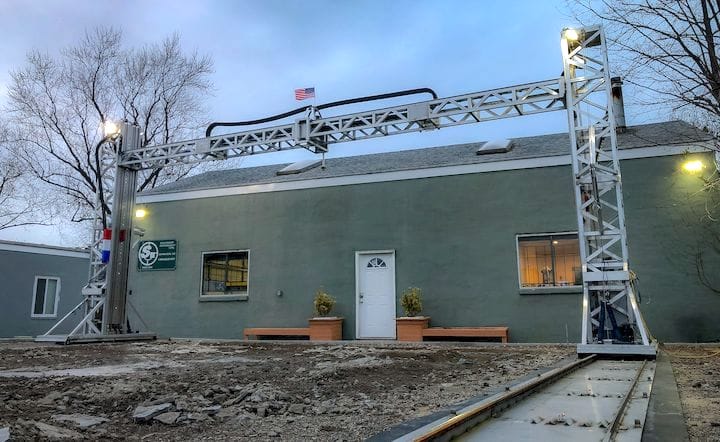![ARCS - a new construction 3D printer [Source: S-Squared]](https://fabbaloo.com/wp-content/uploads/2020/05/image-asset_img_5eb09eae8e692.jpg)
Today we’re looking at yet another new construction 3D printer, this time from S-Squared.
S-Squared is a Long Island, NY-based 3D printer company that has been producing desktop 3D printers since 2016. Currently they offer two models, including an introductory model, the AFP-512, and a more advanced model, the AFP-1728. Both of these appear to be competent machines, but there seems to be little to distinguish them from current competition, particularly from low-cost Asian machines that have flooded the market.
Now we see that they’ve launched “SQ4D” to complement their “SQ3D” line, where the new line focuses on a construction 3D printer, called the Autonomous Robotic Construction System (ARCS). It appears they’ve been developing this machine for about a year.
According to their press release:
”This machine builds everything from homes and commercial buildings, to infrastructure such as roads and bridges. This specialized 3D printer outperforms traditional construction by reducing both time and cost up to 70%. It is considered the most safe, effective, and eco-friendly way to build, defining the new standard for future construction. SQ3D leverages proprietary cutting edge technology to solve the increasingly complex demand of today’s construction. ARCS projects range from 500 square feet to over 1 million square feet.”
![ARCS construction 3D printer lays out for a build [Source: S-Squared]](https://fabbaloo.com/wp-content/uploads/2020/05/image-asset_img_5eb09eaef0c74.jpg)
As this unenclosed machine is intended to work outdoors, I wondered whether they had taken steps to deal with weather conditions. They explain:
“The 3D printed structures can withstand the most severe weather, including high winds from hurricanes. Structures are impervious to water and are fire and mold resistant. All structures built with ARCS have a structural integrity that can last a century and require little maintenance.”
Of course, the operating temperature would have be above freezing, else the extruded concrete would not flow.
They say that ARCS can be set up in as little as six hours, and that appears about right considering the simplicity of the design. You can see how the machine operates in their video:
From the video it appears that the machine simply uses a concrete pump to apply flow to the extruder. The cartesian design allows the machine to deposit a thin layer of concrete across a fairly wide area suitable for small structures.
![The ARCS construction 3D printer extruding a concrete wall with a void space [Source: S-Squared]](https://fabbaloo.com/wp-content/uploads/2020/05/image-asset_img_5eb09eaf3f83c.jpg)
They say that the cost to produce a structure vs “traditional construction” could be as much as 70% lower. However, I question that figure as it likely represents the cost for the concrete portions of the construction cost only, whereas the remaining elements of construction, including plumbing, HVAC, windows, flooring, roofing, electrical, doors, finishing and much more are still done in the usual manner. This is a typical cost scenario for current construction 3D printers, as they can only perform the concrete work.
It may also be a good move for S-Squared away from the overly competitive market for desktop 3D printers, where it’s now at the state where you must have huge amounts of capital to develop the sophisticated machines demanded by the market. By moving into construction 3D printers, you might simplify the entry costs and create an opportunity for big growth in the future if the machine catches on.
My opinion is that ARCS is one of several similar construction 3D printer options on the market currently. I liken the state of this technology to be quite early, as it’s relatively straightforward to build such a machine, and we will see many similar printers emerge in the next while.
What will make the difference is when one of these companies takes steps beyond the initial basic concrete extrusion and incorporates at least some of the other construction disciplines into their automated solution. I believe that the construction 3D printer manufacturer that does that will start a trajectory to a bright future.
Via S-Squared / PrintYourFuture











COBOD’s BOD2 construction 3D printer seems to be catching on as the company has made multiple sales of the new device.